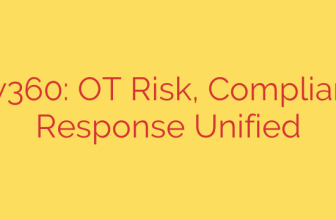
Clop Weaponizes Oracle Zero-Day Flaw in Widespread Data Theft Campaign
The notorious cybercrime group Clop has once again demonstrated its proficiency in exploiting critical security flaws, targeting an unpatched Oracle vulnerability to steal data from corporate networks. Security researchers have revealed that this campaign has been active since at least early August, giving the attackers a significant head start before the flaw was discovered and addressed.
This latest attack leverages a “zero-day” vulnerability, a term for a security flaw that is actively exploited by attackers before the software vendor has a chance to develop and release a patch. This tactic is particularly dangerous because it leaves organizations defenseless until a fix is made available, allowing threat actors to operate undetected for weeks or even months.
A Familiar Pattern of Attack
This campaign fits a well-established pattern for the Clop group, which has become one of the most prolific data theft and extortion gangs in the world. Their modus operandi is ruthlessly efficient: identify a critical, widespread vulnerability in enterprise software, exploit it at scale to steal massive amounts of sensitive data, and then extort the victims by threatening to release the stolen information.
This strategy was used with devastating effect in previous high-profile attacks, including:
- The MOVEit Transfer breach: Exploiting a zero-day flaw in the popular file transfer tool, Clop compromised thousands of organizations globally.
- The GoAnywhere MFT attacks: Similar to the MOVEit campaign, Clop leveraged a vulnerability in another secure file transfer solution to exfiltrate data from major corporations.
In this instance, the target is a widely used Oracle product, underscoring the group’s focus on enterprise-grade software that is deeply embedded in critical business operations. By targeting such systems, Clop maximizes its impact and the potential payout from its extortion demands.
The Danger of a Prolonged Attack Window
The most alarming aspect of this campaign is its timeline. Evidence suggests that attackers have been actively exploiting this flaw since at least early August 2023. This prolonged window of opportunity means the cybercriminals had ample time to breach networks, move laterally to find valuable data, and exfiltrate it without raising suspicion.
Organizations that were running the vulnerable Oracle software during this period must assume they were compromised and immediately launch internal investigations to determine the extent of the breach. Simply applying the patch now, while essential, does not undo any data theft that has already occurred.
Urgent Security Recommendations: How to Respond
For any organization utilizing Oracle products, immediate action is required to mitigate this threat. The following steps are critical for protecting your network and data.
Apply Security Patches Immediately
The single most important step is to identify vulnerable systems and apply the official security patches released by Oracle without delay. A comprehensive and rapid patch management program is the first line of defense against known exploits. Delays in patching provide a direct entry point for attackers.Hunt for Signs of Compromise
Because this vulnerability was exploited for months before being publicly disclosed, patching is not enough. Security teams must proactively search for indicators of compromise (IOCs) dating back to early August. This includes:- Reviewing network logs for unusual outbound traffic or connections to suspicious IP addresses.
- Analyzing system logs on relevant servers for signs of unauthorized access or command execution.
- Scanning for web shells or other malicious files that attackers may have left behind.
Strengthen Proactive Defenses
This incident is a stark reminder that reactive security is insufficient. Organizations should implement robust, proactive measures to limit the impact of future zero-day attacks. Key strategies include:- Network Segmentation: Isolate critical systems to prevent attackers from moving laterally across your network after an initial breach.
- Egress Filtering: Monitor and control outbound network traffic to detect and block data exfiltration attempts.
- Implement an Incident Response Plan: Ensure you have a well-defined and tested plan to respond to a breach, including steps for containment, eradication, and recovery.
The exploitation of this Oracle zero-day by Clop highlights the persistent and evolving nature of cyber threats. It proves that even the most trusted software can be a gateway for sophisticated attackers. Vigilance, rapid patching, and proactive threat hunting are no longer optional—they are essential for survival in today’s digital landscape.
Source: https://www.bleepingcomputer.com/news/security/oracle-zero-day-exploited-in-clop-data-theft-attacks-since-early-august/








